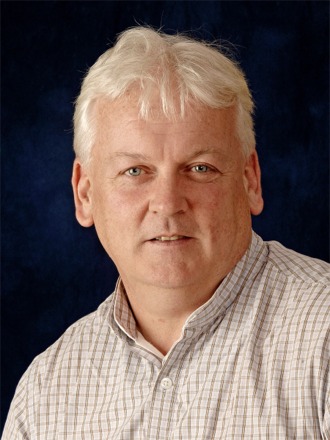Inch earthquake scientist
leads the way
27.02.08
PROFESSOR JOHN McCloskey
caused a worldwide media scramble for his expertise in
the months following the catastrophic St. Stephen's Day
tsunami in December 2004. The reason every press outlet
from Australia to America was looking to interview the
49-year old geophysicist was the earthquake that struck
Nias island in the Indian Ocean several months after the
tsunami disaster.
John and his geophysics team at the University of Ulster
had calculated in a report published on St. Patrick's
Day 2005, that Nias had been under increased strain from
the massive earthquake and tsunami that killed nearly
300,000 people.
The accuracy of his calculations stunned many and drew
much praise from his seismologist counterparts across
the world.
But Prof. McCloskey insists that nobody can forecast
when an earthquake will strike.
All seismologists can do is closely study the data
available to them and try to figure out the most
vulnerable spots on the earth's crust. |
The son of Jimmy McCloskey,
who made and sold fireplaces at Cross Street in the
Waterside and Vera, John's sister is Derry GP Dr. Anne
McCloskey while he has two brothers, Frankie, a plumber
now based in Gweedore, Co. Donegal and Inch-based
Mickey, who runs a geothermal heating company.
John is married to Siobhan, a teacher, and the couple
have two daughters, Mairead and Roisin.
Despite his eminence in the field of seismology, the
geophysicist admits his lifelong interest in Science
wasn't always matched by a love of the books.
"I wasn't the greatest student altogether at university.
There were a lot of other distractions," he laughs,
talking about his undergraduate years in the late 1970s
at Queen's University, Belfast. But his great love of
Science flourished when he began to teach the subject at
second level at a number of Co. Derry and city schools
including St. Mary's in Limavady, St. Pat's in Maghera
and Thornhill College.
"I drifted into teaching after finishing my degree and
they were to become some of the best years of my life."
Each year he took students to the Young Scientist
Competition in Dublin, which, he describes as "brilliant
times". It was during research for his PhD in Physics at
Coleraine in the early 1990s that his future career in
the field of earthquakes was forged. "I was trying to
understand earthquakes in terms of chaos theory," |
 |
he explains, adding that
one of his biggest influences during that time was his
PhD supervisor, the now deceased Prof. Bill Carter.
Another great source of encouragement during this time
was when he won a European award for a paper on
earthquake physics.
When he completed his doctorate, his wife agreed to give
up her teaching job in Magherafelt so that John could
take up a lecturing post in a university in France.
"We agreed that we should at least give it a few years
in France to see how it went," he said.
Nearly 13 years later, he leads the Geophysics Research
Group in the Geophysics Department his founded at the UU
in Coleraine.
He and his team have led research involving ten
institutes on Geophysics and Volcanology from all over
Europe including Paris, Rome, Athens and Prague and they
regularly collaborate with people in the US and all over
the world.
"Our group is very much an international one and we are
very well known. We are trying to understand general
problems so we work on earthquakes everywhere."
Their research post-tsunami shows how the stresses had
moved through the Indonesian region in the wake of the
2004 earthquake. They found that the pressure on a
50-kilometre stretch of the Sunda trench had increased
by up to five bars, and a 300-kilometre segment of the
Sumatra fault was under an extra nine bars of strain.
His team's measurements, showing the increased strain on
the Sunda trench, to the southeast of the region where
December's earthquake struck, were borne out on Nias
Island.
When he learned of the St. Stephen's Day disaster in the
Indian Ocean, he was enjoying a glass of wine at home in
Inch Island.
When he realised the extent of the earthquake he
convened his team immediately in a bid to try and
identify other vulnerable areas in the region.
Through their mathematical calculations, they concluded
that the increased strain on the neighbouring Sumatra
fault, which runs through the island itself, made
Sumatra the most likely place for another earthquake of
the magnitude 7-7.5 on the Richter Scale.
John McCloskey consistently stresses the importance that
seismologists' findings are not predictions.
"There is no reputable scientist in the world today who
believes that earthquakes are presently predictable.
There are some reputable scientists who believe that
they will be predictable some time in the future. I'm
not one of those. I don't believe they will ever be
predictable. I want to stick to the proper
interpretation of what we are saying which is that the
risk has increased and the risk has increased because of
the stresses. They aren't predictions."
He believes earthquake-vulnerable Indonesia should lead
the way in the future building of accommodation that
would resist earthquakes. |
|

